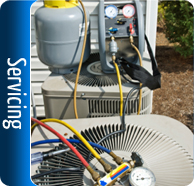R22 Phase Out
1. Background to HCFC Phase-out
The EC Ozone Regulation has been recast and the new Regulation (EC/1005/2009) provides the legislative framework for EU Member States to meet their obligations under the Montreal Protocol, the international agreement drawn up to halt damage to the ozone layer.
- From 1st January 2010 it is illegal to use virgin HFC’s to service RAC equipment. Only reclaimed and recycled HCFC’s may be used. Supplies of recycled or reclaimed HCFC’s might be very limited and very expensive. Note, this ban applies even if HCFC refrigerant was purchased before the ban date. It is illegal to use stockpiles of virgin HCFC’s after the end of 2009, any stockpiled HCFC’s should be returned to fluid suppliers for appropriate disposal.
- From 1st January 2015 it will be illegal to use any HCFC’s to service RAC equipment – so recycled or reclaimed HCFC may no longer be used. See Section 5 below for more details.
It should be noted that the bans described above refer to the ‘use’ of HCFC’s. This specifically means use for servicing and maintenance. It will remain legal to continue using RAC equipment containing HCFC’s beyond the phase-out dates providing they do not require maintenance that involves putting any HCFC’s back into the system.
2. HCFC Phase-out Strategy
- Assess the Risk – identify all systems containing HCFC’s and estimate their associated business risk.
- Prioritise – identify the most business-critical systems and address these first.
- Determine the Phase-out Solution – on a plant by plant basis, identify the most appropriate phase-out solution.
- Planning and Budgeting – develop a Phase-out Plan, with phased implementation of the Phase-out Solutions.
- Implementation – carry out the plan, with monitoring and regular review.
- Managed Use of Recycled and Reclaimed HFC’s – many HCFC systems still in operation will continue to operate during the virgin ban and even after the complete HCFC ban comes into place.
3. Phase-out Solutions
3.1 Replace
Some old systems, including those that are in poor condition, inefficient or not meeting their current (or forecast) cooling load, should be replaced with new systems using a non-ODS refrigerant.
3.2 Convert
For many types of RAC system, which are in good order, it will be possible to recommend a Convert Solution.
3.3 Leave As-Is
This is not a ‘do nothing option’. It is only applicable if:
- (a) a guaranteed stock of recycled or reclaimed HCFC is assure; or
- (b) the system represents no business-critical risk
4. Decision Criteria
The decision to either replace, convert or leave an HCFC plant should be based on a number of criteria. There is no automatic decision algorithm and a balanced assessment must be made of each criterion for each plant.
System type – does the system use ‘direct expansion’ or a ‘flooded evaporator?’
Age – refrigeration and air-conditioning plant over 20 years old are likely to be approaching the end of their natural life and should probably be replaced.
Condition – if a system has been well maintained and is in good condition, this would tend to be more suitable for a Convert solution.
Meeting current requirements – due to the rapid rate of change in many industries, many refrigeration systems are no longer operating within their original design specification.
Energy efficiency – capital costs of commercial and industrial refrigeration and air-conditioning systems are typically around 20% of the total lifetime cost.
Availability – system-specific characteristics must be considered to identify the correct option.
5. Availability and Permitted Use of Recycled and Reclaimed HCFC’s
Only recycled or reclaimed HCFC’s may be used to service and maintain RAC systems from 1st January 2010 until end of December 2014.
The recast EC Ozone Regulation (EC/1005/2009) includes an important distinction between ‘recovered’, ‘recycled’ and ‘reclaimed’ refrigerant gases.
Recovered HCFC – is refrigerant that has been collected from equipment and stored during maintenance or servicing or before disposal. Recovered HCFC can be reused if the equipment has been collected from, but needs to be recycled or reclaimed to be reused in other equipment.
Recycled HCFC – is recovered HCFC gas that has been subject only to a basic cleaning process (this might include mechanical filtering and moisture removal). Recycled HCFC’s may only be used by either the undertaking which carried out the recovery (in most cases the refrigeration contractor) or the undertaking for which the recovery was carried out (the owner). Recycled HCFC’s may not be placed on the market – ‘placing on the market’ means the supplying or making available to third persons within the Community for payment or free of charge. For example, the owner could use the recycled HCFC in RAC equipment at other sites they operate from, but they cannot sell or give recycled HCFC to a third party.
Reclaimed HCFC – is recovered HCFC gas that has been chemically reprocessed to a specified standard. Reclaimed HCFC’s may be placed on the wider market and used by undertakings other than the original contractor and owner. Reclaimed HCFC’s must be held in containers labelled as such, with information on the batch number and name and address of the reclamation facility.
6. Other Proposed Amendments to the EC Ozone Regulation
In addition to the points described in Section 5 above, the new ozone legislation includes further obligations on the operators of HCFC systems. These are broadly similar to the requirements of the EC F gas Regulation.
More information is available at:
or other contact details are:
- F-Gas
- Support
- Promoting compliance with F Gas and Ozone Regulations
- Telephone Helpline: 0161 8743663
- Email: fgas-support@enviros.com





